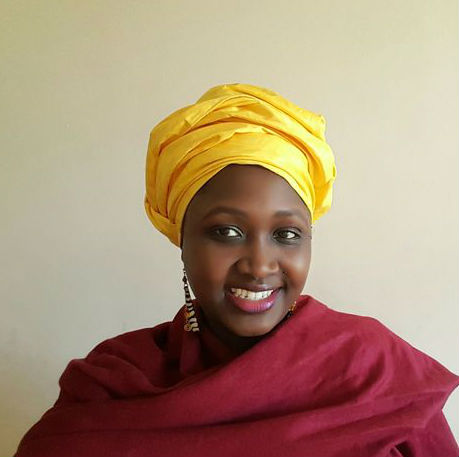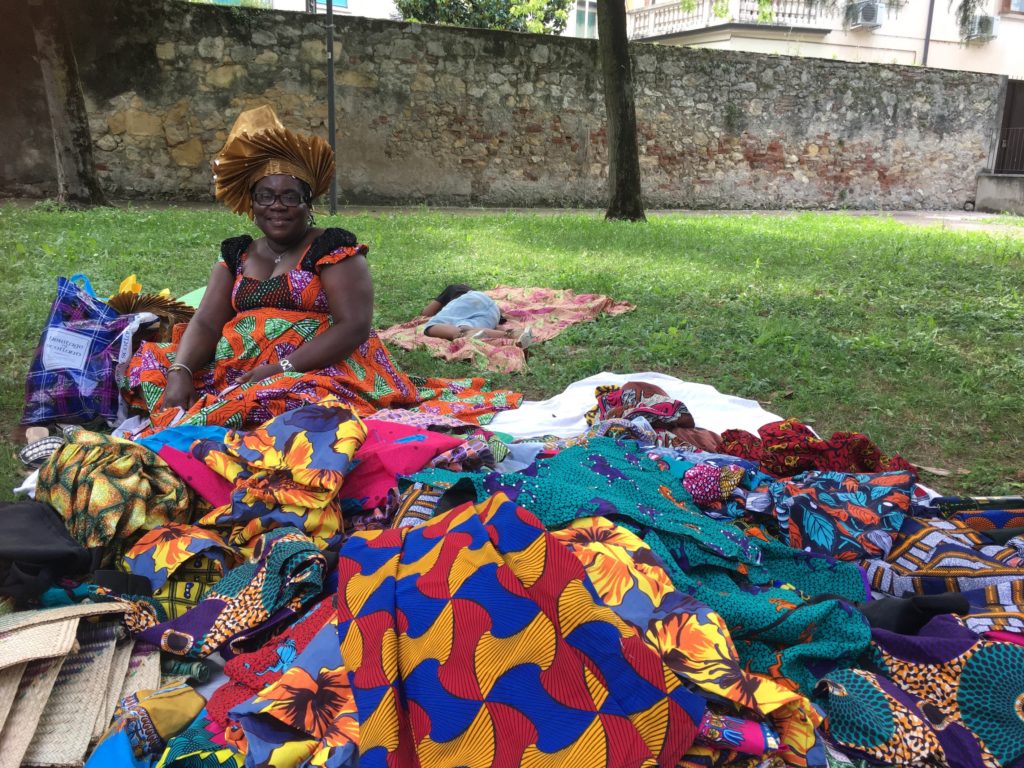Suely Torres is a Brazilian woman who, amid the pandemic, founded the German Migration Museum in Berlin. From the time she left Brazil to her arrival in the German capital, less than a year before the fall of the wall, Suely has been part of the city’s history.
By Terezinha Malaquias
The story of a woman from Pernambuco in Berlin
I met Suely Torres in 2014 when I was in Berlin to attend the literary workshop of the writer Luiz Ruffato, organised by her, at the Brazilian Embassy in the city. She arrived in Berlin in December 1988, in the middle of winter and with a lot of snow. She was born and lived in Recife until she started university at the Federal University of Pernambuco.
She was a student of the master, writer, and playwright Ariano Suassuna, who greatly influenced her and formed to a great degree the woman she is today. Suassuna was an enchanting figure, who has left us broad-ranging literary work adapted for cinema and television, that we see in videos circulating on the Internet to this day.
Even almost seven years after his death, he remains unforgettable because he was one of the most brilliant man we have ever had in Brazil. He was a significantly questioning teacher, and from these questions, he gave his masterclasses.
If, by chance, a student arrived wearing a T-shirt with the words “I love you New York”, he would ask: Why don’t you wear a T-shirt with the words “I love the Sertão?” (alluding to this Brazilian region). From his questions, which were often provocative, he made the students think critically without losing his characteristic poetic enchantment.
Suely worked at the Berlinale, at the House of World Culture/HKW and with this work, she had the opportunity to work for many Brazilian artists.

Suely studied Literature in her hometown and asked for a transfer to the Federal University of Rio de Janeiro, URFJ. At the new University, she met the writer Paulo Lins, a student at the same University. She lived in student accommodation and worked as a proof-reader at the University’s publishing house.
In the 80s, the “Diretas Já” movement (demanding direct presidential elections in Brazil) was growing all over Brazil. Suely Torres, who wanted to study abroad, started sending CVs to some universities and was accepted at the Free University of Berlin (FU). Family and friends held a big farewell party for her. And to help with the expenses of the trip to the new country, she raffled off her Walkman, a hit among young people in the late eighties.
She moved to Berlin more than thirty years ago, before the fall of the wall that had divided the country into East and West Germany for 28 years.
To pay for a German language course, she started doing puppet theatre in the underground wagons and earned very well daily, working an average of four hours a day. In the new city, she also studied physiotherapy and graduated as a physiotherapist. She did not however go on to work in the field.
Suely worked at the Berlinale, at the House of World Culture/HKW and with this work, she had the opportunity to work for many Brazilian artists. Among them were some of her idols, like Caetano Veloso, Gilberto Gil, Jorge Ben Jor, the actress Fernanda Montenegro, Olodum, Daniela Mercury, film directors, like Karim Ainouz and many others. Many writers at the Frankfurt book fair would then travel on to Berlin at Suely’s invitation to launch their books there, or to do a reading, or a talk. These events were organised by her as a cultural agent and independent curator.

The Day the Berlin Wall Fell
Eleven months after her arrival in Berlin, she was at home watching the news on television, and a big scream started. Quickly Suely grabbed her bicycle, which was in the backyard, and almost flew off her bike. When she arrived at the wall next to the Brandenburg Gate, people were climbing the fence and helping each other.
Much more shouting, hugging and tears were heard. Suely hugged several people. Emotion danced in the bodies and eyes of those people who couldn’t quite believe what was happening. “The feeling was incredible because it wasn’t my people, but it was something radiant and exciting. It seemed as if I had opened the prison door, and all the prisoners were free. I had never seen anything like it.
From the following day and for a long time, it was almost impossible to go to the supermarket or get on the metro because the door wouldn’t close. People were squeezed into the cars. Many didn’t believe it was really true.
Supermarkets had block-long queues. Shopping was limited to one kilo of food per person. Many people took the whole family with them when they went to buy something. Suddenly, the population had doubled. The residents of former East Berlin abandoned their homes and moved to the West Side. You could tell which side the person was from by the cars’ model, their haircuts and the clothes they wore.
“The feeling was incredible because it wasn’t my people, but it was something radiant and exciting. It seemed as if I had opened the prison door, and all the prisoners were free. I had never seen anything like it.”

They looked like tourists trying to recognize the new place. It was a wonderful experience and what impressed me the most in Berlin,” said Suely.
In 2009, when the twentieth anniversary of the fall of the wall was commemorated, Suely had the opportunity to do two articles for television channels in Brazil. She even interviewed some people who had spent the night together, celebrating the Berlin Wall’s fall on 9 November 1989.
A Photographer Was Born
Her experience and interest in photography started in 1992, when she was a student at the Free University of Berlin (FU), and got a job photographing the abandoned buildings on the East side and documenting the city’s history for the creation of an archive. She then got a Polaroid camera and a notebook. And a bicycle was needed to carry out this work.
She took photographs and made notes in her notebook. This work allowed her to get to know Berlin better and develop this relationship with photography that has continued to this day. Suely continues photographing the city. The difference is that now the photos she took are for her and for us, photography and the city of Berlin lovers. What attracts us most to the pictures is the unique and loving look of this extraordinary photographer, who translates feelings and tells stories through her special and unique clicks. Berlin and Suely mix and mingle.
Suely is a fantastic and elegant artist. She is always dressed in well-cut clothes, classic and at the same time with a certain casualness. Her house, as well as her whole being, breathes, exudes, and inspires art.

Suely is a fantastic and elegant artist. She is always dressed in well-cut clothes, classic and at the same time with a certain casualness. Her house, as well as her whole being, breathes, exudes, and inspires art.
She is a Portuguese teacher, cultural manager, independent curator at the UDK Art University Berlin, as well as being a photographer. She has been curating for other artists and her own exhibitions in Berlin. Furthermore, she is in the last semester of a social and cultural anthropology course.
The German Museum of Migration is Born
Suely Torres founded and opened the German Museum of Migration in December 2020, as a place for us migrants to tell our stories. Through the storytelling of people from different parts of the world, we get to know a little of Berlin’s diversity. How wonderful! We need and deserve a museum of our own.
Nothing is more current than this museum that was born during the pandemic. We are at home, and the museum is virtual. It is accessible to us twenty-four hours a day, seven days a week.
For ten years, she dreamed of and prepared for the Deutsches Migrationsmuseum (DMM). She founded a non-profit association, registered the name, studied and researched many similar museums in several countries, including in São Paulo, Brazil, where she did a residency at the “Museu da Pessoa”, to learn how a virtual museum works. She also took a curatorship course in Berlin. The aim of the museum is to interview migrants from all over the world.
The museum also aims to give space and opportunity for people to introduce themselves and tell their stories through short videos. It serves to provoke a reflection on the themes of migration and migrants, but with a personal view; that of a migrant woman who has lived in Germany for more than half of her life. “Some critical questions: 1) Who are the migrants, and where are they? 2) What is it to be a migrant? 3) What does a migrant look like? 4) What defines a migrant? 5) What normalizes and relativizes our migrant situation?” asks Suely.
The German Migration Museum is a non-profit institution registered and recognised by the German government. It is our house, in a sense. It’s a space of diverse narratives. It has our voice, our look, feelings and experiences.
“After all, the German is also a migrant,” she concludes. She includes this vision in her interviews with Germans, Swiss, Austrians, North Americans, “because anyone who does not have a German passport and lives in Germany is a migrant”.
“When people ask me where I come from, I answer, I am German! Where I come from is not the right question to ask myself. It is where am I going,” explains Suely.
The German Migration Museum is a non-profit institution registered and recognised by the German government. It is our house, in a sense. It’s a space of diverse narratives. It has our voice, our look, feelings and experiences. It’s a space created by a Brazilian woman from Recife and supported by two other Brazilian women, Mariana Florio and Fernanda Sumita.
Women on the move bring knowledge, experiences and revolution in the same suitcase that brought them across the ocean.
www.deutschesmigrationsmuseum.de
www.brasilianisch-lernen.de

Terezinha Malaquias is a visual artist, writer and performer.
Author of six books, including Teodoro (2019) Portuguese-English, Menina Coco (2018), Portuguese German, Modelo Vivo (2005) Portuguese. In 2017 she was the performer and executive producer of the short film ‘Na Pose,’ about her trajectory as a live model. She has a YouTube channel for her performances and poems. She has featured in anthologies in Germany, Brazil, Europe and the USA.
She created and presented on Sundays on her Instagram account, @terezinhamalaquias, the live Breakfast/Frühstück. She is the creator of the self-portrait series on Instagram @terezinhamalaquias ”Look at me… Schau mich an…,” which began in 2017, with the themes of Visibility and Resistance, as well as the body as art support.
She created on her YouTube channel the series ”’Brasileirxs Estrangeirxs como Eu!”
https://www.terezinhamalaquias.com



